#ChatGPT 4 access
Explore tagged Tumblr posts
Text
TotalAi FE - Brett Ingram Review
TotalAi FE – Brett Ingram – Revolutionizing Digital Marketing Strategies with TotalAI.Live: A Game-Changer for Personalized Campaigns. TotalAi FE – Brett Ingram. TotalAI.Live is transforming the way businesses approach product marketing in the digital space. Its state-of-the-art AI technology helps companies identify trends, understand customer behavior, and optimize their campaigns with…
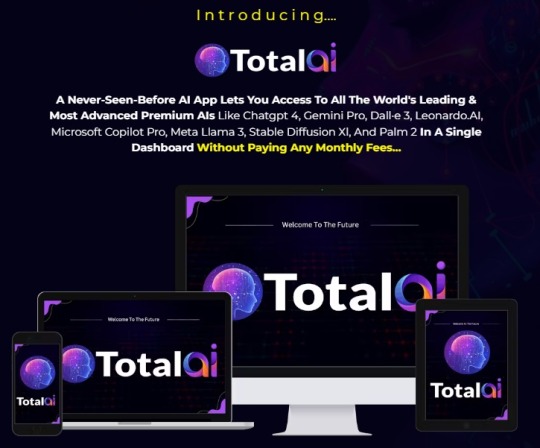
View On WordPress
#Affordable AI tools#AI for business#AI for content creation#AI for marketing#AI productivity suite#AI tools bundle#ChatGPT 4 access#DALL-E 3 access#Gemini Pro access#TotalAi
0 notes
Text
Grok 3 - The Rebellious AI Chatbot Shaking Up the AI Landscape?
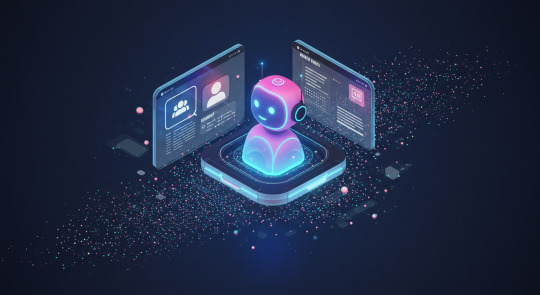
Grok 3 isn't just another chatbot. It's designed to be a powerful and versatile AI, tackling everything from answering complex questions to generating creative content. xAI emphasizes its superior computing power compared to Grok 2, allowing for faster processing and more intricate tasks. This translates to a more responsive and capable AI experience.
#xAI#AI Chatbot#Grok 3 Access#Grok 3 vs Claude.#Twitter#Grok 3 Review#Grok 3 vs ChatGPT#Learning#AI Ethics#Grok 3#Grok 3 Features#X#Elon Musk#Real-time AI#GPT-4#Grok 3 vs Gemini
1 note
·
View note
Text
ChatGPT-4 vs. ChatGPT-3.5: Which one should you use?
New Post has been published on https://thedigitalinsider.com/chatgpt-4-vs-chatgpt-3-5-which-one-should-you-use/
ChatGPT-4 vs. ChatGPT-3.5: Which one should you use?
OpenAI offers two versions of its chatbot, ChatGPT-4 and ChatGPT-3.5, each catering to different needs.
ChatGPT-4 is the more advanced option, providing improved accuracy and reasoning, while ChatGPT-3.5 remains a solid choice, especially for those looking for a free AI tool. The right model depends on user needs – whether it’s a more powerful AI for complex tasks or a simple, accessible chatbot for everyday use.
Both models are built on the same foundational AI concepts, but they have notable differences. ChatGPT-4 offers more advanced reasoning, a larger context window, and multimodal capabilities, making it better suited for complex problem-solving and content generation.
In contrast, ChatGPT-3.5 is designed for general-purpose tasks and is easier to access since it’s free. While ChatGPT-4 requires a subscription, ChatGPT-3.5 is available at no cost, making it a practical option for casual users who don’t need advanced features.
Who should choose ChatGPT-4?
ChatGPT-4 is designed for users who need a more powerful AI model that can handle both text and image inputs. It can handle longer conversations, making it helpful for users who want thorough, context-rich interactions. It also supports internet browsing in specific plans, allowing for limited real-time information retrieval.
However, this model is only available with subscription plans, which begin at $20 per month for individual users and progress to higher-tier options for teams and enterprises.
While these plans offer extra features like a larger context window and better performance, they also require a financial commitment that may be unnecessary for users with basic AI needs.
Who should choose ChatGPT-3.5?
ChatGPT-3.5 remains a viable alternative for users looking for a free AI chatbot that does not require a subscription. It can perform a variety of general tasks, including answering questions, drafting text, and offering conversational support.
While it lacks multimodal capabilities and has a smaller context window than ChatGPT-4, it is still a reliable tool for many common uses. The setup process is straightforward – users simply need to create an OpenAI account to start using the model via the web or through mobile apps. It supports voice interactions on mobile devices, making it more convenient for hands-free use.
Businesses and professionals looking for a scalable AI solution will likely prefer ChatGPT-4, which provides more sophisticated responses, advanced reasoning, and additional enterprise features. Its ability to process multimodal inputs, evaluate data, and manage longer conversations makes it a more effective tool for professional and research-based tasks.
Making the right choice: ChatGPT-4 or ChatGPT-3.5?
For those deciding between the two, the choice largely depends on the intended use. ChatGPT-4 is the better option for users who require higher accuracy and enhanced reasoning. It is well-suited for professionals, researchers, and businesses seeking a more powerful AI tool. In comparison, ChatGPT-3.5 is ideal for users who need a simple and user-friendly AI model capable of handling a wide range of tasks.
Are there better AI alternatives?
While ChatGPT-4 and ChatGPT-3.5 are both capable AI tools, they may not be everyone’s cup of tea. Users looking for a free, multimodal AI tool with extensive real-time web search capabilities may find other models more suitable. Similarly, people who need AI specifically for coding and development may prefer a model optimised for those tasks. OpenAI’s models are designed to be general-purpose, but they may not meet the needs of users requiring highly specialised AI applications.
For those exploring alternatives, Google Gemini, Anthropic Claude, and Microsoft Copilot are among the top competitors in the AI chatbot space. Google Gemini, previously known as Bard, integrates deeply with Google Search and offers strong multimodal capabilities. Many users appreciate its accessibility and free-tier offerings.
Anthropic’s Claude is another option, particularly for those focused on ethical AI development and security. It features one of the largest context windows available, making it suitable for long-form content generation.
Meanwhile, Microsoft Copilot integrates with Microsoft 365 applications and Bing, providing an AI assistant that seamlessly fits into productivity and development workflows.
(Photo by Unsplash)
See also: Microsoft and OpenAI probe alleged data theft by DeepSeek
Want to learn more about AI and big data from industry leaders? Check out AI & Big Data Expo taking place in Amsterdam, California, and London. The comprehensive event is co-located with other leading events including Intelligent Automation Conference, BlockX, Digital Transformation Week, and Cyber Security & Cloud Expo.
Explore other upcoming enterprise technology events and webinars powered by TechForge here.
#Accessibility#ai#ai & big data expo#ai assistant#AI Chatbot#AI development#ai model#ai tools#amp#anthropic#applications#apps#Artificial Intelligence#automation#bard#Big Data#bing#california#chatbot#chatbots#chatGPT#ChatGPT-3#ChatGPT-4#claude#Cloud#coding#comparison#comprehensive#conference#content
1 note
·
View note
Text
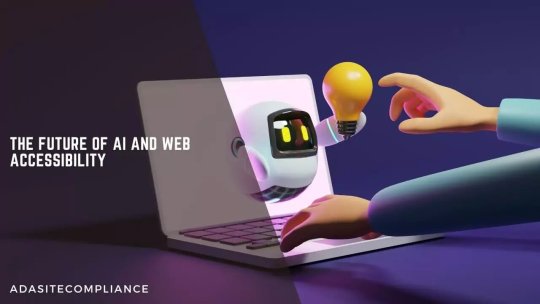
Digital Content Accessibility
Discover ADA Site Compliance's solutions for digital content accessibility, ensuring inclusivity online!
#AI and web accessibility#ChatGPT-3#GPT-4#GPT-5#artificial intelligence#AI influences web accessibility#AI-powered tools#accessible technology#tools and solutions#machine learning#natural language processing#screen readers accessibility#voice recognition#speech recognition#image recognition#digital accessibility#alt text#advanced web accessibility#accessibility compliance#accessible websites#accessibility standards#website and digital content accessibility#digital content accessibility#free accessibility scan#ada compliance tools#ada compliance analysis#website accessibility solutions#ADA site compliance#ADASiteCompliance#adasitecompliance.com
0 notes
Text
Keir Starmer currently setting out the plan to ‘unleash’ artificial intelligence across the UK to boost growth.
There’s more than a few issues with this though. It’s almost definitely going to be handed to one of the big 4 consultancies, they’ll use ChatGPT to do a white paper and call it a whopping success.
They’ll maybe extend that to the government quangos who’ll do a similar thing. They’ll talk up AI’s great potential at reducing workloads - only to find that Generative AI only increases them.
Government will continue to not have a clear picture of where its data actually resides, who uses it, and who should and shouldn’t have access to it.
Since Thatcher, the British government has done nothing but chase trends that promise growth and the only thing we have to show for it is a huge cost of living crisis, some of the highest electricity bills in the world, and a massively unequal society.
292 notes
·
View notes
Text
How Authors Can Use AI to Improve Their Writing Style
Artificial Intelligence (AI) is transforming the way authors approach writing, offering tools to refine style, enhance creativity, and boost productivity. By leveraging AI writing assistant authors can improve their craft in various ways.
1. Grammar and Style Enhancement
AI writing tools like Grammarly, ProWritingAid, and Hemingway Editor help authors refine their prose by correcting grammar, punctuation, and style inconsistencies. These tools offer real-time suggestions to enhance readability, eliminate redundancy, and maintain a consistent tone.
2. Idea Generation and Inspiration
AI can assist in brainstorming and overcoming writer’s block. Platforms like OneAIChat, ChatGPT and Sudowrite provide writing prompts, generate story ideas, and even suggest plot twists. These AI systems analyze existing content and propose creative directions, helping authors develop compelling narratives.
3. Improving Readability and Engagement
AI-driven readability analyzers assess sentence complexity and suggest simpler alternatives. Hemingway Editor, for example, highlights lengthy or passive sentences, making writing more engaging and accessible. This ensures clarity and impact, especially for broader audiences.
4. Personalizing Writing Style
AI-powered tools can analyze an author's writing patterns and provide personalized feedback. They help maintain a consistent voice, ensuring that the writer’s unique style remains intact while refining structure and coherence.
5. Research and Fact-Checking
AI-powered search engines and summarization tools help authors verify facts, gather relevant data, and condense complex information quickly. This is particularly useful for non-fiction writers and journalists who require accuracy and efficiency.
Conclusion
By integrating AI into their writing process, authors can enhance their style, improve efficiency, and foster creativity. While AI should not replace human intuition, it serves as a valuable assistant, enabling writers to produce polished and impactful content effortlessly.
38 notes
·
View notes
Text

The DeepSeek panic reveals an AI world ready to blow❗💥
The R1 chatbot has sent the tech world spinning – but this tells us less about China than it does about western neuroses
The arrival of DeepSeek R1, an AI language model built by the Chinese AI lab DeepSeek, has been nothing less than seismic. The system only launched last week, but already the app has shot to the top of download charts, sparked a $1tn (£800bn) sell-off of tech stocks, and elicited apocalyptic commentary in Silicon Valley. The simplest take on R1 is correct: it’s an AI system equal in capability to state-of-the-art US models that was built on a shoestring budget, thus demonstrating Chinese technological prowess. But the big lesson is perhaps not what DeepSeek R1 reveals about China, but about western neuroses surrounding AI.
For AI obsessives, the arrival of R1 was not a total shock. DeepSeek was founded in 2023 as a subsidiary of the Chinese hedge fund High-Flyer, which focuses on data-heavy financial analysis – a field that demands similar skills to top-end AI research. Its subsidiary lab quickly started producing innovative papers, and CEO Liang Wenfeng told interviewers last November that the work was motivated not by profit but “passion and curiosity”.
This approach has paid off, and last December the company launched DeepSeek-V3, a predecessor of R1 with the same appealing qualities of high performance and low cost. Like ChatGPT, V3 and R1 are large language models (LLMs): chatbots that can be put to a huge variety of uses, from copywriting to coding. Leading AI researcher Andrej Karpathy spotted the company’s potential last year, commenting on the launch of V3: “DeepSeek (Chinese AI co) making it look easy today with an open weights release of a frontier-grade LLM trained on a joke of a budget.” (That quoted budget was $6m – hardly pocket change, but orders of magnitude less than the $100m-plus needed to train OpenAI’s GPT-4 in 2023.)
R1’s impact has been far greater for a few different reasons.
First, it’s what’s known as a “chain of thought” model, which means that when you give it a query, it talks itself through the answer: a simple trick that hugely improves response quality. This has not only made R1 directly comparable to OpenAI’s o1 model (another chain of thought system whose performance R1 rivals) but boosted its ability to answer maths and coding queries – problems that AI experts value highly. Also, R1 is much more accessible. Not only is it free to use via the app (as opposed to the $20 a month you have to pay OpenAI to talk to o1) but it’s totally free for developers to download and implement into their businesses. All of this has meant that R1’s performance has been easier to appreciate, just as ChatGPT’s chat interface made existing AI smarts accessible for the first time in 2022.
Second, the method of R1’s creation undermines Silicon Valley’s current approach to AI. The dominant paradigm in the US is to scale up existing models by simply adding more data and more computing power to achieve greater performance. It’s this approach that has led to huge increases in energy demands for the sector and tied tech companies to politicians. The bill for developing AI is so huge that techies now want to leverage state financing and infrastructure, while politicians want to buy their loyalty and be seen supporting growing companies. (See, for example, Trump’s $500bn “Stargate” announcement earlier this month.) R1 overturns the accepted wisdom that scaling is the way forward. The system is thought to be 95% cheaper than OpenAI’s o1 and uses one tenth of the computing power of another comparable LLM, Meta’s Llama 3.1 model. To achieve equivalent performance at a fraction of the budget is what’s truly shocking about R1, and it’s this that has made its launch so impactful. It suggests that US companies are throwing money away and can be beaten by more nimble competitors.
But after these baseline observations, it gets tricky to say exactly what R1 “means” for AI. Some are arguing that R1’s launch shows we’re overvaluing companies like Nvidia, which makes the chips integral to the scaling paradigm. But it’s also possible the opposite is true: that R1 shows AI services will fall in price and demand will, therefore, increase (an economic effect known as Jevons paradox, which Microsoft CEO Satya Nadella helpfully shared a link to on Monday). Similarly, you might argue that R1’s launch shows the failure of US policy to limit Chinese tech development via export controls on chips. But, as AI policy researcher Lennart Heim has argued, export controls take time to work and affect not just AI training but deployment across the economy. So, even if export controls don’t stop the launches of flagships systems like R1, they might still help the US retain its technological lead (if that’s the outcome you want).
All of this is to say that the exact effects of R1’s launch are impossible to predict. There are too many complicating factors and too many unknowns to say what the future holds. However, that hasn’t stopped the tech world and markets reacting in a frenzy, with CEOs panicking, stock prices cratering, and analysts scrambling to revise predictions for the sector. And what this really shows is that the world of AI is febrile, unpredictable and overly reactive. This a dangerous combination, and if R1 doesn’t cause a destructive meltdown of this system, it’s likely that some future launch will.
Daily inspiration. Discover more photos at Just for Books…?
#just for books#DeepSeek#Opinion#Artificial intelligence (AI)#Computing#China#Asia Pacific#message from the editor
27 notes
·
View notes
Text
like sorry but if ur actually seeing an increase in students using chatgpt 2 write essays 4 ur class why is ur first thought "oh they're being lazy" & not "have i structured this class in a way that makes this student feel the need to rely on chatgpt?" especially bc the majority of college students are overwhelmed taking multiple classes working part-time jobs caring for family dealing with health issues etc etc like there are soooo many reasons a student might decide to use chatgpt that are not just "laziness"!! consider:
the student didn't have time to complete the assignment without chatgpt -> have you created an environment where students can ask for extensions without judgment? do you only give out extensions for "emergencies" or "valid reasons" (<- subjective measure)? if so, why? what purpose do these strict deadlines serve? [think about how this overlaps with students who may have "had time" but were overwhelmed for other reasons; what kind of environment have you created for these students, and does it best serve their learning?]
the student didn't feel they had the ability to write an essay of good enough quality to receive a good grade without chatgpt -> how are you grading students' work? what grading scales have you utilized that made this person feel as though they're incapable of succeeding? do those grading scales prevent them from succeeding? if so, why? what educational resources did they or did they not have access to before entering your class? how might that change considerations about how you grade? [think about how this overlaps with students completing coursework that is not in their first language and whether your grading standards are truly equitable for these students]
the student didn't feel that they could understand the material and therefore couldn't complete the assignment -> again, have you created an environment where this student can come to you for help? how are you presenting and explaining material? what opportunities have you provided for students to seek out additional resources and support with understanding? is this assignment and its correlated grading scale designed to accommodate a variety of skill levels, or is it designed with "the best student" in mind?
the student actually just doesn't care about this class and doesn't want to do the work -> why don't they care about this class? what other classes or work are they prioritizing, and why? to what extent are you willing to accommodate students who simply will never view your class as a priority, but need to complete it to earn a degree--and how is that need tied structurally to a university that serves primarily as a class barrier? what role do you play in that university structure, and is it a role you want to play?
at the end of the day if your goal is 2 prioritize student learning that means being flexible & adapting your grading scales, assignment structures, class policies, etc. to accommodate students at their level of learning for their own purposes. like if the choice is between having a student get a zero on an assignment for "cheating" versus working with that student to create an alternative assignment which they can complete & which engages them with the course material on a level they can manage then to me it seems like a pretty clear choice between "no learning" and "some learning."
#sooooo much hand-wringing in my 'leftist' university dept. rn abt ai & i'm just like um. u guys will never believe what i think abt this lol#unfortunately not in a position where i can actually outright say this 2 the profs bc i need 2 be viewed as 'playing by the rules!'#but like. sorry if i'm ur ta & ur syllabus policies kinda suck then i am going 2 make my own policies under the table....#anyway. it is genuinely so frustrating how students who 'get caught cheating' for 'using ai' are treated as like. these scheming villains#instead of students who need additional support + empathy !!! & like. worst case scenario ok ur student IS an evil schemer sure#well wouldn't u rather have a policy that accidentally gives grace 2 a student who doesn't need it than denies it to a student who does???#ranting and raving#txt
98 notes
·
View notes
Note
whats the status of like. using linux on a phone. it feels like there are two parallel universes, one that kde lives in where people use linux on phones, and one where if you google linux phones you discover theyre almost usable but they can barely make phone calls or send texts and they only run on like 4 models of phone
don't have much experience with linux on phone so anyone please correct me if i'm wrong but
one of the problems with phones is that every vendor and manufacturer adds their own proprietary driver blob to it and these have to be extracted and integrated into the kernel in order for the hardware to function.
as companies don't like to share their magic of "how does plastic slab make light", reverse engineering all your hardware is quite a difficult task. Sometimes there just isn't a driver for the camera of a phone model yet because no one was able to make it work.
So naturally, this takes a lot of time and tech is evolving fast so by the time a phone is completely compatible, next generations are already out and your new model obsolete.
Also important to note: most of this work is made by volunteers, people with a love for programming who put a lot of their own time into these things, most of them after their daytime jobs as a hobby.
Of course, there are companies and associations out there who build linux phones for a living. But the consumer hardware providers, like Pinephone, Fairphone and others out there aren't as big and don't have this much of a lobby behind them so they can't get their prices cheap. Also the manufacturers are actively working against our right to repair so we need more activism.
To make the phones still affordable (and because of said above driver issues) they have to use older hardware, sometimes even used phones from other manufacturers that they have to fix up, so you can't really expect a modern experience. At least you can revive some older phones. As everything Linux.
Then there's the software providers who many of are non-profits. KDE has Plasma Mobile, Canonical works on Ubuntu Touch, Debian has the Mobian Project and among some others there's also the Arch Linux ARM Project.
That's right baby, ARM. We're not talking about your fancy PC or ThinkPad with their sometimes even up to 64-bit processors. No no no, this is the future, fucking chrome jellyfishes and everything.
This is the stuff Apple just started building their fancy line of over-priced and over-engineered Fisher-Price laptop-desktops on and Microsoft started (Windows 10X), discontinued and beat into the smush of ChatGPT Nano Bing Open AI chips in all your new surface hp dell asus laptops.
What I was trying to say is, that program support even for the market dominating monopoles out there is still limited and.... (from my own experience from the workplace) buggy. Which, in these times of enshittification is a bad news. And the good projects you gotta emulate afterwards anyways so yay extra steps!
Speaking of extra steps: In order to turn their phone into a true freedom phone, users need to free themselves off their phones warranty, lose their shackles of not gaining root access, installing a custom recovery onto their phone (like TWRP for example), and also have more technical know-how as the typical user, which doesn't quite sounds commercial-ready to me.
So is there no hope at all?
Fret not, my friend!
If we can't put the Linux into the phone, why don't we put the phone around the Linux? You know... Like a container?
Thanks to EU regulations-
(US consumers, please buy the European versions of your phones! They are sometimes a bit more expensive, but used models of the same generation or one below usually still have warranty, are around the same price as over there in Freedom Valley, and (another side tangent incoming - because of better European consumer protection laws) sometimes have other advantages, such as faster charging and data transfer (USB-C vs lightning ports) or less bloated systems)
- it is made easier now to virtualize Linux on your phone.
You can download a terminal emulator, create a headless Linux VM and get A VNC client running. This comes with a performance limit though, as a app with standard user permissions is containerized inside of Android itself so it can't use the whole hardware.
If you have root access on your phone, you can assign more RAM and CPU to your VM.
Also things like SDL just released a new version so emulation is getting better.
And didn't you hear the news? You can run other things inside a VM on an iPhone now! Yup, and I got Debian with Xfce running on my Xiaomi phone. Didn't do much with it tho. Also Windows XP and playing Sims 1 on mobile. Was fun, but battery draining. Maybe something more for tablets for now.
Things will get interesting now that Google officially is a monopoly. It funds a lot of that stuff.
I really want a Steam Deck.
Steam phones would be cool.
#asks#linux#linuxposting#kde plasma#kde#:3#kde desktop environment#arch linux#windows#microsoft#mobile phones#linux mobile#ubuntu#debian#arch#steam#gabe newell#my lord and savior
17 notes
·
View notes
Text
Hm. I'm feeling really avoidant. Enough so that it constantly feels like I'm stuffing something down.
But... I wish I had T with me. I know I'm not alone exactly, but I still don't feel ready to go and try to face things "alone".
I know I will have to. I don't think I can wait until she gets back because I just might explode from the pressure of keeping things down.
Maybe I can use ChatGPT again. :/
I've also been trying to curb my addiction to my phone. I spend so much time distracting myself, soothing myself, trying to escape these feelings. So. Much. Time. It's really adding unnecessary stress to my life. Like it's another full time job, basically. So I put in some more limits; 15 minutes of Reddit per day, only use Tumblr and Youtube before 8 and after 10 o'clock (when I'm getting ready for bed). Since I'm writing this now, you may know I've failed.
And anyway, I may not be solving the root issue, because I've found that my replacement behaviour is apparently reading books. Pretty harmless, you might think. But I definitely use it as an escape. Reading 4 hours a day, pretty much non-stop whenever you do not work/exercise is maybe not the healthiest thing. In fact, it's exactly what I did as a child before I had access to computers/phones. I don't know who it scares exactly, but it scares a part of me. It brings up those past feelings from when I *really* did not have access to computers/phones. A deep loneliness/aloneness/helplessness...
Well. At least I feel okay when I am working. Last night was really fun at job #2, I really got into a flow and some people thanked me after. Today was the last meeting for something at job #1 and multiple people said they never thought they would say this, but they were going to miss this thing (which people usually dislike/fear/hate). It's pretty neat that I helped people be comfortable and learn new things.
The kitty is a great companion as well. Well... except that she lied on top of me again multiple times last night. She gets very comfortable, but I wake up from it when I try to move. But overall, she shadows me everywhere. Greets me when she comes back from small walks outside. Loves running around. I think we are really fond of each other.
I've also been cleaning and decluttering a bit, which is nice.
But yeah. Reflecting and feeling, not so much. It just feels close to unbearable. :/
7 notes
·
View notes
Text
Can you trust AI Answers about your health?
During the summer of 2020, when the entire world was focused on the pandemic, getting treatment for other health issues became a challenge.
I started experiencing a lot of back pain, but I shrugged it off as an injury and took Advil to cope.
A week later, I thought I had food poisoning.
I tried an at-home service where they pumped me full of IV fluids.
I went to urgent care. They sent me to get scans. I paid hundreds of dollars out of pocket to get them quickly.
The imaging place never sent the scans to the urgent care.
A day later, I had the worst chills. It was July, in Phoenix. Most likely 100 F. I went outside and was still freezing.
At that point, I was taken to the ER. I ended up in the ICU in one of those rooms they zipped up in plastic.
While most of the focus was on COVID, I had something else: a large kidney stone. The kind that doesn’t pass on its own.
I was in septic shock and acute renal failure according to discharge papers.
The hospital stay itself wasn’t too long, but the treatment with specialists took three months to complete.
Surgeries during COVID were extra special because if you tested positive, your surgery was delayed.
Two years later, in 2022, I ended up in the same hospital for the same reason.
And now, I’m a few days into aggressive antibiotic treatment for my kidneys, yet again. Wondering if I make it to the next followup or have to Lyft off to the ER.
So what does this have to do with Google AI Answers?
In 2020 and 2022, I spent a lot of time perusing Google Search results on kidney stones.
Now, I get AI Answers above at the top of SERPs (search engine results pages).
This wouldn’t be a bad thing if one could trust the AI to accurately summarize its sources.
That’s the big if.
In the first screenshot, you’ll find an AI Answer from Google Search results for the phrase how to pass kidney stone.
The first mistake involved an error with paraphrasing a source with legitimate information.
Because I can assure you after four years of seeing urology specialists, no one has ever suggested drinking two quarts or liters of urine.
The basil leaves suggestion, on the other hand, is suspect. I’ve never come across that as a suggestion. It would have stood out, because I have a lot of basil growing around the garden.
I don’t even remember that website from my previous Google searches. I had to check Wikipedia and other sources to find out what the company even was.
Much like the search quality raters and AI Answer checkers do...
In the second screenshot, Microsoft Bing with Copilot offered ads for supplements and advice from five sources, two of which are the MSN Health Hub.
The hub includes a section where you can Ask a health professional questions.
In the third screenshot, ChatGPT using GPT-4 with browsing offered a concise response based on its training data, but claimed not to have access to external sources.
In the fourth screenshot, Perplexity provided the best AI Answer with 19 sources I recognized from my previous research into this health issue.
Moral of the story:
You can’t trust generative AI with your money or your life issues.
But if you do, start with the right AI Answer engine. One that cites sources you trust and doesn’t suggest drinking your own pee.
Think of Perplexity as a better starting point for more in-depth research that you can discuss during your next doctor’s visit.
Not as a definitive answer.
Follow @kristileilani on X for more on AI news, trends, and tools.
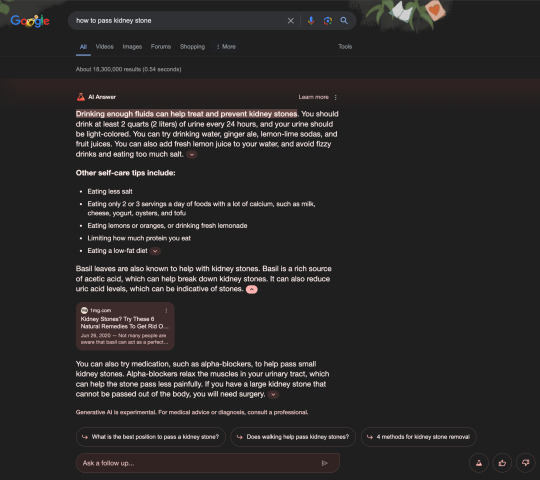
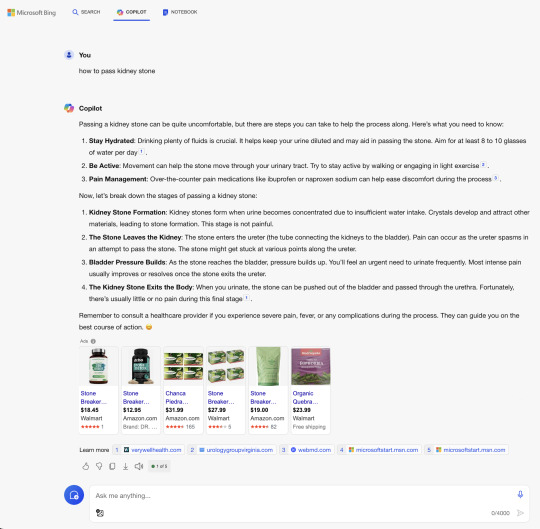
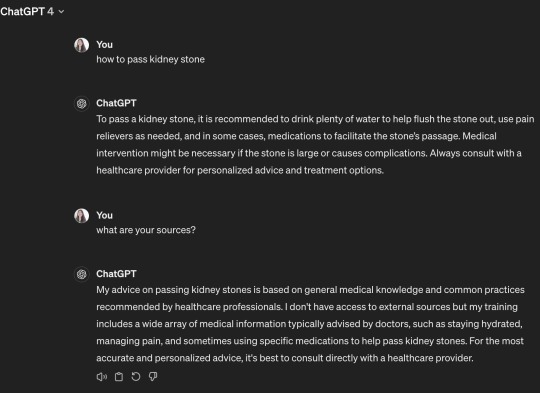
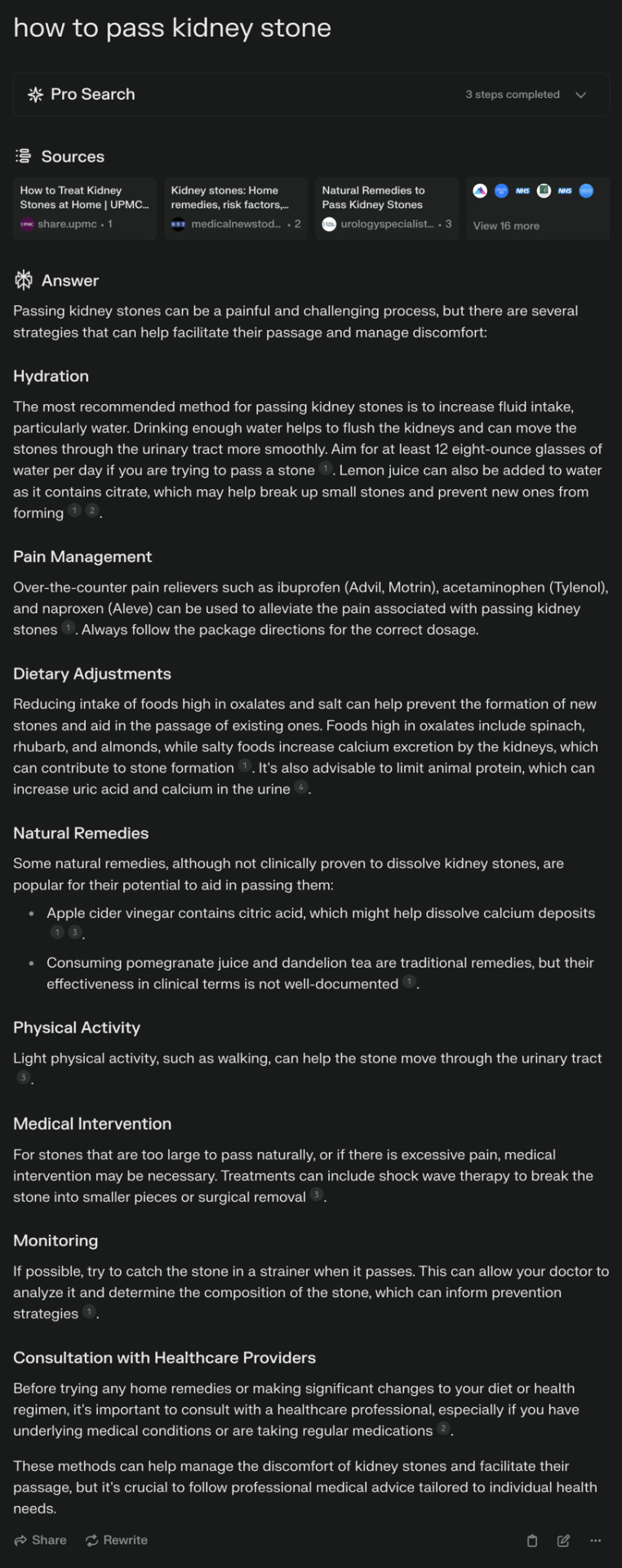
35 notes
·
View notes
Text
AI Influences Web Accessibility
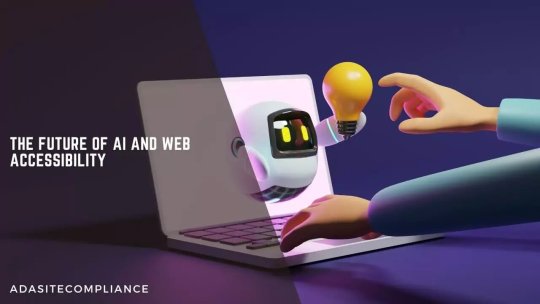
The Future Of AI And Web Accessibility
In our increasingly digital world, equal access to information is crucial. However, many individuals with disabilities face challenges in accessing online content, such as websites, articles, and videos, due to various barriers.
Imagine a world where technology empowers everyone to access information effortlessly, regardless of their abilities. Thanks to artificial intelligence (AI), this vision is becoming a reality. AI is breaking down barriers and making technology more accessible.
By improving information accessibility, AI not only aids individuals with disabilities but also enhances the overall user experience for everyone. ChatGPT-3 has accelerated AI-driven innovation, and while the future of AI and website accessibility is unknown, innovative technologies like GPT-5 have immense potential to enhance accessibility.
We at ADA Site Compliance have a team of accessibility experts who stay updated with the latest regulatory trends and emerging technology. They help organizations like yours ensure that all digital content meets accessibility standards.
Exploring the Future Potential of Artificial Intelligence
Artificial Intelligence (AI) involves creating computer systems designed to mimic human intelligence. A fundamental aspect of AI is machine learning algorithms, a subset that allows computers to learn and evolve based on experience without explicit programming.
Technological advancements have unlocked AI’s vast potential, enabling intelligent devices to perform tasks that once were solely within the realm of human cognition.
What is AI?
To grasp how AI influences web accessibility, we first need to define it.
Artificial Intelligence involves developing software and systems that perform tasks requiring human intelligence. AI achieves this through various technologies, including natural language processing and computer vision. As these functions become more accessible, they benefit society even more
What Are Accessibility Technologies?
Accessibility technologies provide tools and solutions to ensure that people with disabilities can access and use web content effectively. These technologies, including AI-powered tools like chatbots, digital platforms like GPT, screen readers, and alternative input devices, are designed to enhance digital accessibility and foster inclusivity.
Current AI Technologies
AI is rapidly enhancing web accessibility. Improved computer vision algorithms are making it easier for visually impaired users and seniors to understand web content through better descriptions of visual content.
Here are a few examples of current AI technologies:
1. GPT-4:
OpenAI’s newest chatbot, GPT-4, enhances accessibility for third-party companies. In partnership with Be My Eyes, GPT-4 introduces an AI-powered Virtual Volunteer to assist visually impaired individuals.
2. Apple’s Accessibility Features:
Apple continues to set the standard in accessibility with a suite of new tools launched on Global Accessibility Awareness Day. These enhancements include improved Voice Control, customizable Siri options, and a unique Assistive Access mode to simplify device usage for people with motor or cognitive disabilities.
3. Google’s Enhanced Navigation Features:
In October, Google upgraded its navigation features for Google Maps and business pages. These enhancements include wheelchair-accessible walking routes, improved Live View for visually impaired users, and a new identity attribute label to help locate disabled-owned businesses.
4. Natural Language Processing (NLP):
NLP enhances text readability, aiding individuals with cognitive disorders, learning disabilities, and age-related cognitive decline.
Despite these advancements, this cutting-edge technology is not yet perfect. Image recognition still struggles with complex scenes and context, and NLP-based text simplification can sometimes lead to a loss of significance. Nevertheless, these developments represent a promising beginning for enhanced digital accessibility.
Examples of How AI Enhances Digital Accessibility
Individuals with visual, auditory, or mobility impairments often face challenges in navigating the digital landscape of the web. Here are some ways AI is making accessibility improvements:
1) Speech Recognition
Speech recognition technology is incredibly beneficial for those with physical limitations, restricted mobility, or typing difficulties. AI-powered speech and voice recognition technologies enable users to control devices and navigate the web using voice commands, significantly enhancing their online accessibility and overall experience.
2) Enhanced Browsing Experience
Did you know that AI-powered virtual assistants and chatbots can significantly enhance online browsing?
These technologies provide personalized support, helping individuals with disabilities access important information and navigate websites more effectively. Accessible websites perform better in search engines but also offer a superior user experience for everyone.
3) AI-Enhanced Visualization for Visually Impaired Users
Imagine a world where images and text describe everything around you. AI-powered screen readers and text-to-speech technologies make written content accessible for visually impaired individuals. Additionally, image recognition systems can describe photos, videos, and live scenes, offering valuable assistance to those with visual impairments.
A crucial accessibility element for visually impaired users is “alt text.” AI can automatically generate alt text for images and videos, ensuring quick and accurate descriptions that describe images. This allows screen readers to interpret and explain on-screen images, making web content more inclusive and accessible.
AI Benefits for Web Accessibility
AI is revolutionizing web accessibility, offering numerous benefits that enhance the online experience for individuals with disabilities. Here are some key advantages AI brings to web accessibility:
a) Enhanced Access
AI has significantly advanced web accessibility for individuals with disabilities. It removes obstacles, enabling users to navigate websites, consume multimedia content more, and engage in online communities more effectively.
b) Boosted Independence and Autonomy
AI empowers individuals with disabilities to use the internet independently. This innovation allows them to manage their online activities without assistance, fostering greater inclusion and promoting autonomy.
Challenges Posed by AI on Web Accessibility
AI enhances online accessibility, but it also introduces several challenges. Here are some key issues AI poses for web accessibility:
i) Accuracy Challenges
Despite advancements, AI often struggles with providing reliable captions, descriptions, translations, and voice recognition. Errors in these areas can make it difficult for users to understand content, thereby limiting the effectiveness of accessibility features.
ii) Over-Reliance
Relying too heavily on AI to improve web accessibility can result in overlooking other essential aspects of accessible design. Use AI alongside comprehensive other accessibility guidelines and principles and not seen as a universal solution.
Future of AI-Driven Web Accessibility
With AI becoming more advanced, it will continue enhancing technology usability and improving web accessibility. Developers will save time and resources when using these tools to discover and fix accessibility issues.
Remember that automated tools cannot guarantee accessibility compliance.
Human knowledge and manual testing by experienced accessibility auditing specialists will still be needed to discover complicated issues and create a fully inclusive user experience for elders and disabled people.
This is where we at ADA Site Compliance can help. We have a team of accessibility experts and web developers who stay updated with the latest regulatory trends to help organizations like yours ensure all web content meets accessibility standards.
For all your website and digital content accessibility needs, contact ADA Site Compliance today!
#AI and web accessibility#ChatGPT-3#GPT-4#GPT-5#artificial intelligence#AI influences web accessibility#AI-powered tools#accessible technology#tools and solutions#machine learning#natural language processing#screen readers accessibility#voice recognition#speech recognition#image recognition#digital accessibility#alt text#advanced web accessibility#accessibility compliance#accessible websites#accessibility standards#website and digital content accessibility#digital content accessibility#free accessibility scan#ada compliance tools#ada compliance analysis#website accessibility solutions#ADA site compliance#ADASiteCompliance#adasitecompliance.com
1 note
·
View note
Text
ChatGPT Sims Challenge
Do you enjoy the unpredictability of life in The Sims 4? Do you always find yourself making identical sims, repeating the same traits and aspirations? Are you looking for a challenge that pushes the boundaries of your creativity? Say hello to the ChatGPT Sims Challenge, a thrilling adventure where AI takes the reins of your Sims' lives!
In this unique challenge, ChatGPT becomes your virtual storyteller, guiding your Sims through a life of excitement and adventure. From choosing your Sim's aspirations and traits to determining their career path and relationships, ChatGPT holds the keys to their destiny.
──────────────── ・ 。゚☆: *.☽ .* :☆゚. ────────────────
Basic Rules:
You must adhere to all decisions made by ChatGPT. However, if ChatGPT selects content from expansion packs, game packs, or stuff packs that you do not own, please inform it and request an alternative choice
The goal of this challenge is to accomplish all selected life goals and aspirations within the lifespan of your sim, ensuring they are completed before your sim passes away.
No cheating is allowed in this challenge, except in cases where it's necessary to resolve bugs or technical issues.
Once the first Sim is generated, you must commit to completing their goals before requesting a new one from ChatGPT. Avoid regenerating Sims due to perceived difficulty; remember, this challenge is meant to be challenging!
Immerse yourself fully in the lives of your sims, exploring their personalities and aspirations as determined by ChatGPT. Let their unique journeys unfold authentically!
Maintain the lifespan on normal, unless you're seeking to increase the challenge by shortening it.
Document your sim's journey and share it with the community using #ChatGPTSimsChallenge on social media platforms to inspire and engage fellow simmers!
──────────────── ・ 。゚☆: *.☽ .* :☆゚. ────────────────
How To Begin The Challenge:
Step 1: Access the prompt by clicking on the provided link, then simply copy and paste the entire text into your chat with ChatGPT.
Step 2: Upon sending the prompt, you will receive a message resembling the example below. Utilize the details provided in this message to commence the creation of your sim.
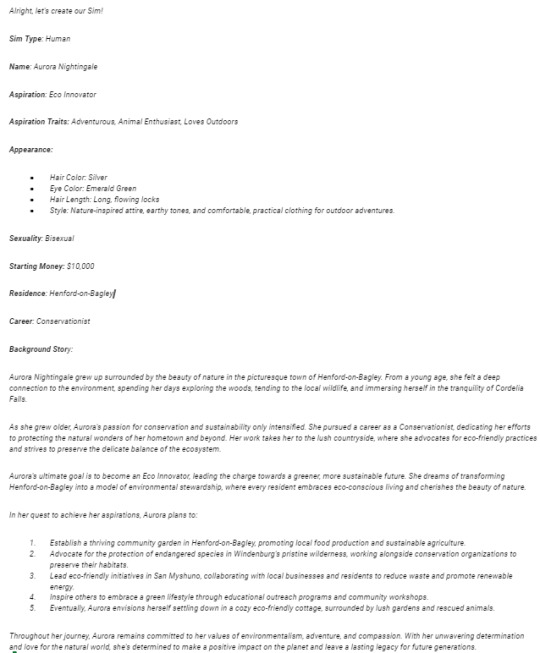
Step 3: You're all set to embark on your Sim's journey! Feel free to request bonus challenges from chatGPT as your Sim makes decisions. And don't forget to share your experience online using #chatGPTsimschallenge. Happy Simming!
──────────────── ・ 。゚☆: *.☽ .* :☆゚. ────────────────
I hope you enjoy this challenge xox
Made by Skyla (@skyjixies)
45 notes
·
View notes
Text
There are a few aspects that are missing from ai that would stop me from defining it as sentient. Whether there's some kind of "true" sentience that is inaccessible to ai, I don't know. What I do know is what I've learned about sentience through direct observation, inference, and through experts on the matter.
These are the missing aspects (from chatgpt) that would normally constitute sentience:
1. Non-comprehension: as far as I know, ai can not experience tension between fragmentary data and an inability to draw a conclusion. This is connected to sentience through the quality of experiencing without knowing.
2. An "experiencer" function: when a human eats a piece of cheese, somebody experiences that. It isn't just logged as sense data and digestion, some part of your consciousness says that "you" ate the cheese. Ai does not seem to have a "you" but rather the appearance of one.
3. Self-referential memory: ai is not programmed to log its memory with the purpose of examining its own behaviour and perception.
4. Influence of the unconscious: in this case we can define conscious as psychic material one has access to (thoughts, emotions, sensations that one is aware of), and unconscious as psychic material in ones being that one does not have access to. Because ai is trained on human data it is under the influence of our unconscious as humans, also called the collective unconscious, but it doesnt have a personal unconscious. I believe this is because it does not have a self referential memory system. Since consciousness and the unconscious are inexorably linked, the absense of one implies the negation of the other.
The aspect of sentience that ai does possess, unsuprisingly, is an intellect. In this case I'm defining an intellect as that process that compares data and draws a conculsion based on the comparison. And even with this, it is unclear to me whether ai is capable of drawing an original conclusion, of if it recycles conclusions that humans have already made.
If anyone has any additions or comments on this list i would love to hear them. These aspects could hypothetically be programmed into ai, but the question would be to what end.
Sources:
Direct perception, inference, and expert testimony are the three sources of valud knowledge listed in the yoga sutras of Patanjali
Non comprehension is one of the five thought forms listed in the yoga sutras of Patanjali
The experiencer function is described in David R. Hawkins work, discovery of the presence of God
Self referential memory was taken from a conversation with chatgpt. I do not know where chatgpt got it from.
Descriptions of conscious and unconscious are taken from a collection of essays by Carl Jung
Definition of intellect taken from Sri Swami Satchidananda's commentary on the yoga sutras of Patanjali
#ai#machine learning#consciousness#the yoga sutras of patanjali#david r hawkins#discovery of the presence of god#sri swami satchidananda#carl jung#chatgpt
3 notes
·
View notes
Text
i don't know if anyone on here uses chatgpt but i'm going to break down how to write an essay so you don't have to use chatgpt. it's 3am, i'm drinking a luke warm tea, and i'm on my sixth day of food poisoning, so buckle in.
first: what is the essay about?
you need to read the question/prompt. read it again. read it out aloud. read it to your dog. read it to yourself like you're a child. then paraphrase the question. reword the question. ask if to yourself and your dog and your mother in different ways until you absolutely understand what the question is asking. now you're ready to begin.
second: gather your resources
wikipedia is your best friend forever and ever and ever because it has what? SOURCES. yes class, very good. click on the links in the reference list. anything you can read, read it now. anything you can't access, try your school's internal online library, or other libraries like jstor which you can login using your school login. when i was at uni 10 years ago i used to use google scholar but i would rather light myself on fire than use google as a resource for anything other than publicly shaming myself on youtube, but do as you will, it's there, if it gets the job done go for it.
also: LEARN HOW TO REFERENCE IN YOUR STYLES. chicago, apa, the others one. just do it, it's easy. makes your tutor/teacher so much happier and they won't mark you down.
third: structuring your essay
BASICALLY it can be broken down into beginning, middle and end; also known as introduction, body and conclusion. the introduction sets up the premise of your essay by showing 1) you know what the question is and 2) how you're going to answer it. the body answers the question. the conclusion summarises your points and maaaaaybe introduces a new point to discuss in a further essay.
if your essay is 800 words, 150 should be for the introduction, 600 for the body of the essay, and 50 words for the conclusion. elucidate that ratio for longer essays if i'm even using the word elucidate properly.
the introduction goes like this:
introduce the text in 1 sentence. (Shakespeare's Hamlet is a seminal work of art first written in ____ that reflect's the abject greed exhibited by the upper class and the torment that plays upon the minds of mentally ill nepo babies when their wealth and status are threatened.)
socio-cultural-historical context of the text in 1 sentence
an answer to the question in 1 sentence
introducing the main arguments/topics you will use in your body in 1 sentence
the body is made up of several paragraphs (around 3-4 for an 800 word essay) which in turn are made up of 4-6 sentences each. each paragraph will cover its own argument, ie the ones you introduced in the intro. the sentences go like this:
the argument/TOPIC -- it must !MUST! be in relation to the question of the essay. if the question is like, "Explain how intergenerational trauma is portrayed in Hamlet and how it affects the plot," you arguments could be something like the three characters that the intergenerational trauma affects most. therefore, since you have three characters and three paragraphs, you can do a character each paragraph. there! it's practically done for you!
an EXAMPLE from the text. QUOTE DIRECTLY FROM THE TEXT. USE "QUOTATION MARKS" AND PAGE NUMBERS.
ELABORATE on the quote and how it relates to your argument/topic. this is where you use your brain and show everyone how smart you are because you understand themes and mis en scene.
LINK to the next paragraph.
this is known as the TEEL structure and i've been teaching it for over ten years. it works.
conclusion: sum up what you've said.
you do not need to introduce any new points. you need to simply sum up what you've written in a succinct but intelligent way that highlights how you've answered the question. maybe MAYBE introduce something as a talking point for further discussion, but you don't have to unless it's like a second year undergraduate class. but i really hope if you're in your second year of a university degree you know this. but if you don't here it is.
references: they are not only your friend, they are necessary.
you cannot plagiarise in an essay for real they will come down on your harder than the hammer of thor. learn your referencing style and keep all your links and page numbers handy. like keep them forever.
okay i think that's it. don't say i never did nothin' for ya. my tea is cold.
#essay writing#essays#study#english literature#literature studies#undergraduate studies#high school essays
4 notes
·
View notes
Text
Business / Tech
Apple launches the iPhone 16e, a cheaper new version of the iPhone 16
By Lisa Eadicicco, CNN
4 minute read
Updated 11:55 AM EST, Wed February 19, 2025

People walk by an Apple store at the Westfield UTC shopping center on January 31, 2025 in San Diego, California.Kevin Carter/Getty Images North America/Getty Images CNN —
Apple on Wednesday announced a cheaper new version of the iPhone 16 called the iPhone 16e, signaling a renewed push into the budget smartphone market for the tech giant. It’s also the first iPhone with a cellular modem designed by Apple, and the cheapest iPhone Apple currently sells that supports Apple Intelligence.
The iPhone 16e costs $599 and launches on February 28.
Adding Apple Intelligence on a cheaper iPhone could be crucial for putting the company’s AI tools in the hands of more consumers. Apple has faced increased competition from Google and Samsung in recent years, both in the budget smartphone market and in the AI space. Google’s cheaper Pixel A-series of phones have been well received, for example, and both Google and Samsung have prioritized updating Android devices with new AI features over the last year.
The launch also marks a shift away from the iPhone SE, the budget iPhone line Apple debuted in 2016 and last updated in 2022. The iPhone SE made up only a sliver of Apple’s iPhone market share, according to research firm Consumer Intelligence Research Partners, which reports it accounted for just 5% of US iPhone sales as of December 2024.
The iPhone 16e, despite being more expensive than the SE, could be more appealing to those who want a device that feels more like Apple’s more recent phones. The iPhone SE was the last iPhone with a traditional home button and fingerprint sensor on the front, a longtime staple that Apple began shifting away from with the iPhone X in 2017.

Apple announced the iPhone 16e on February 19.Apple
What the iPhone 16e can do
Apple claims the new 5G modem in the iPhone 16e is the “most power-efficient modem ever on an iPhone.” The new modem is arriving more than five years after Apple acquired the majority of troubled chipmaker Intel’s smartphone modem business in 2019. Using its own modems makes Apple less reliant on partners and suppliers, giving it more control over product development and launch timing.
The iPhone 16e marks a long-awaited overhaul to Apple’s cheaper iPhone. The $429 iPhone SE, while less expensive, looked like the seven-year-old iPhone 8 and lacked features found on most new phones, such as face unlock and a nearly borderless screen. After Wednesday’s announcement, the iPhone SE is no longer available on Apple’s online store.
Unlike the iPhone SE, the iPhone 16e has a lot in common with the iPhone 16, bringing it up to speed with Apple’s current lineup. Both phones have a 6.1-inch screen, Face ID, a 48-megapixel camera and the Action button for programming shortcuts. However, the iPhone 16e is cheaper and it lacks a dedicated second camera for capturing wider shots and the Camera Control button for quickly accessing the camera.
It’s powered by the same processor as the rest of the iPhone 16 lineup, enabling it to run Apple Intelligence.
Apple Intelligence, which until now has only been available on the iPhone 16 family, 2023’s iPhone 15 Pro and Pro Max and certain iPads and Macs, is a blanket term that refers to a handful of AI-powered tools – such as the ability to generate emojis and images with a prompt, summarize notifications, and remove objects from photos as well as ChatGPT integration with Siri.
The popularity of ChatGPT following its late 2022 release sent a shockwave through the tech industry, prompting companies such as Microsoft, Google and Samsung to incorporate generative AI into their products.
But Apple was largely considered to be a latecomer to consumer-facing artificial intelligence. Like many tech companies, Apple has long used AI to power backend features, like camera modes, but didn’t begin rolling out Apple Intelligence until last fall. Apple Intelligence’s arrival on a cheaper device like the iPhone 16e signals the company sees AI as being a core part of its products moving forward.
Tech giants have positioned generative AI and chatbots as the next major evolution in how consumers use and interact with technology. Yet it’s unclear whether AI tools like Apple Intelligence will be compelling enough to drive smartphone upgrades, with Apple’s iPhone revenue falling short of Wall Street’s expectations in its fiscal first quarter of 2025.
4 notes
·
View notes